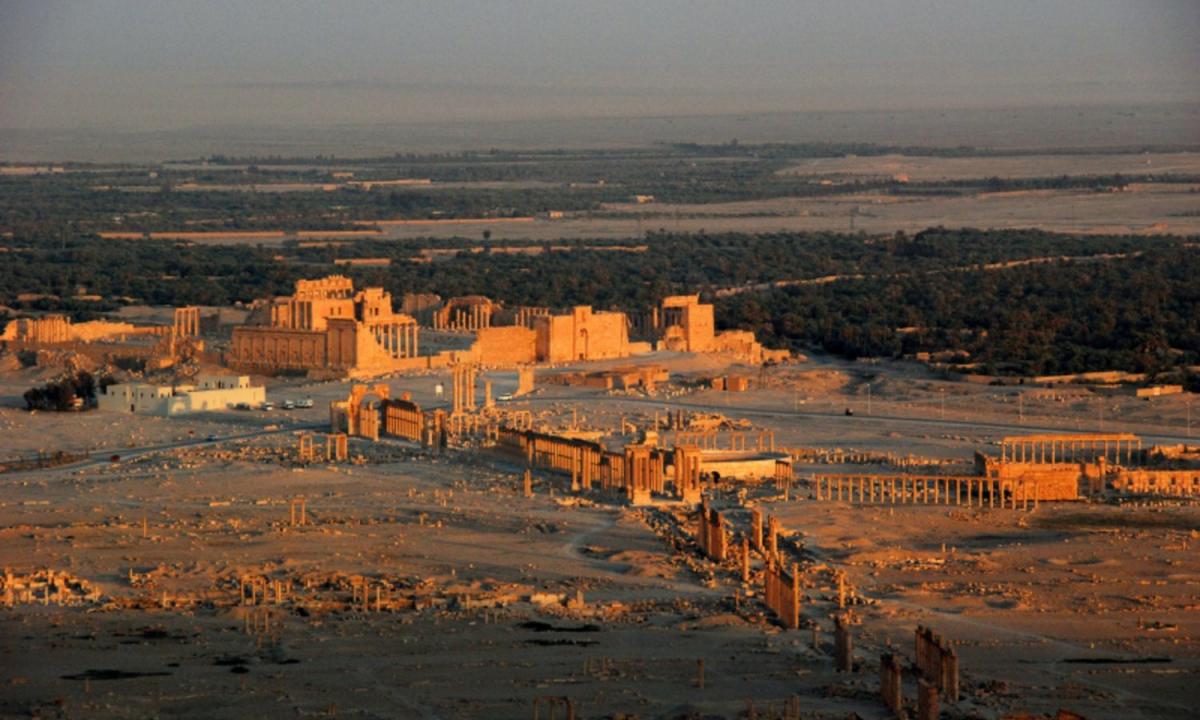, the military-political situation in Syria of our days does it by the unattractive place for holding another holiday. However rather recently the picture was absolutely other – it seemed, was not in the region of the country, safer and kind to tourists. The numerous ancient monuments which everywhere are available in the territory of this state attracted large numbers of the visitors seeking to touch ancient ruins of the left civilizations. Some of such monuments can call the well-known Palmyra today – once the center of the powerful empire, and today – concentration of majestic ruins under the scorching sun of the desert.
Like other known cities of the Middle East, initially Palmyra arose on crossing of caravan tracks, in one of oases of the Syrian Desert. Through it there passed the caravans delivering from Arabia gold, aromas, slaves and other refined goods of that time. Date of foundation of the city to call difficult – the legend correlates it to the antiquated Solomon who equipped here the military strengthening protecting it the kingdom from attacks of nomads. Centralnaya Street of Palmyra once was the site of a caravan track – the city expanded around it.
Actually, Palmyra is the name Greek. The historical name of the city – Tadmor that it is possible to translate from Aramaic language as the City of Palm trees. Greeks only translated this name literally into the language – it is known that these lands were once a part of the empire of Alexander the Great, and subsequently were a part of the state of Selevkidov. However the greatest blossoming endured the city much later – in the III century of our era.
Those years a fair part of the Middle East was under the power of Romans. Even today many remained buildings of the city show typical Roman style of architecture. Representatives of the local nobility were to some extent Romanized, and some autonomy was provided to the city. So, the governor Uzeyna was approved here – in the Roman sources better known under the name of Septimiya Odenata. At some point he lifted a mutiny against Romans, however soon died. Management of the city-state was taken in hand by his spouse queen Zeynab – differently, Zenobia – also could make improbable. It not only forced out the Roman troops from the region, but extended the power to all Syria, Palestine, and even Egypt. So Palmyra became the center of the large state, and became known on all classical antiquity.
Over time Zenobia nevertheless was prostrate Romans. As the honourable captive of the emperor Avrelian she was brought to Rome, chained in gold chains. The queen on a country house near Tivoli, in the conditions of quite comfortable lived out the days. The picture of the artist Herbert Shmalts A farewell view of Zenobia to Palmyra where the moment of farewell of the queen to the homeland is imprinted is known. However this period remained is imprinted in the monuments of Palmyra which reached us in its modern look – so, among other, at one of columns there is an inscription of the queen Zenobia.
LifeGid recommends to visit also other countries of the Middle East: Turkey, Jordan, Egypt.

